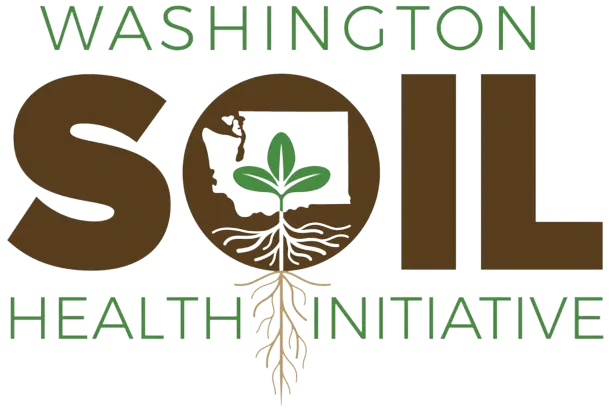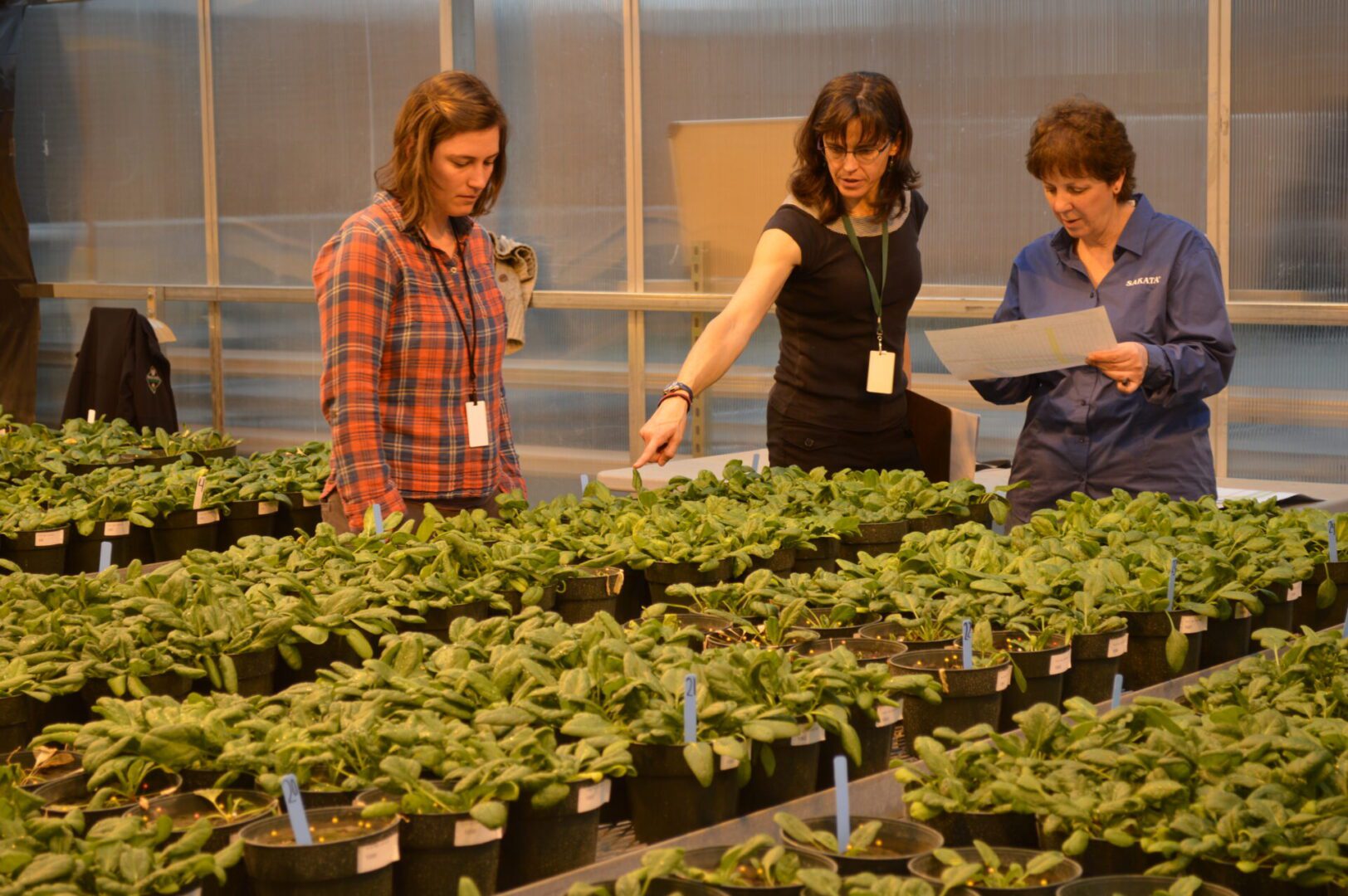
An actually actionable biological soil health indicator
Managing Fusarium wilt in spinach seed crops
April 15, 2024
Author: Molly McIlquham
A few years after Lindsey du Toit began her faculty position at Washington State University in 2000, a spinach seed farmer walked into her office and dropped a 5-gallon bucket of soil on her desk. He simply wanted to know if his spinach seed crop would thrive or die from Fusarium wilt if he planted a seed crop in that field the following spring.
With this question in mind, she began developing what is now an integral part of her Vegetable Seed Crop Pathology Research and Extension program — a soil bioassay for spinach seed growers that translates biological soil data into actionable insights.
A soilborne fungus threatening spinach salads worldwide
Each spinach leaf in your salad starts from a seed. While the seeds are tiny, the related farming challenges are large! Long daylength, essential to make spinach plants change from vegetative (leafy) growth to reproductive (flowering) growth for seed production, along with mild summer temperatures and dry summer conditions make western Washington and Oregon ideal for growing a steady supply of high-quality seeds for spinach cultivation worldwide. No other region in the USA has this combination of conditions required for spinach seed production. As a result, this region of the Pacific Northwest produces about 20% of the world’s supply of spinach seed.
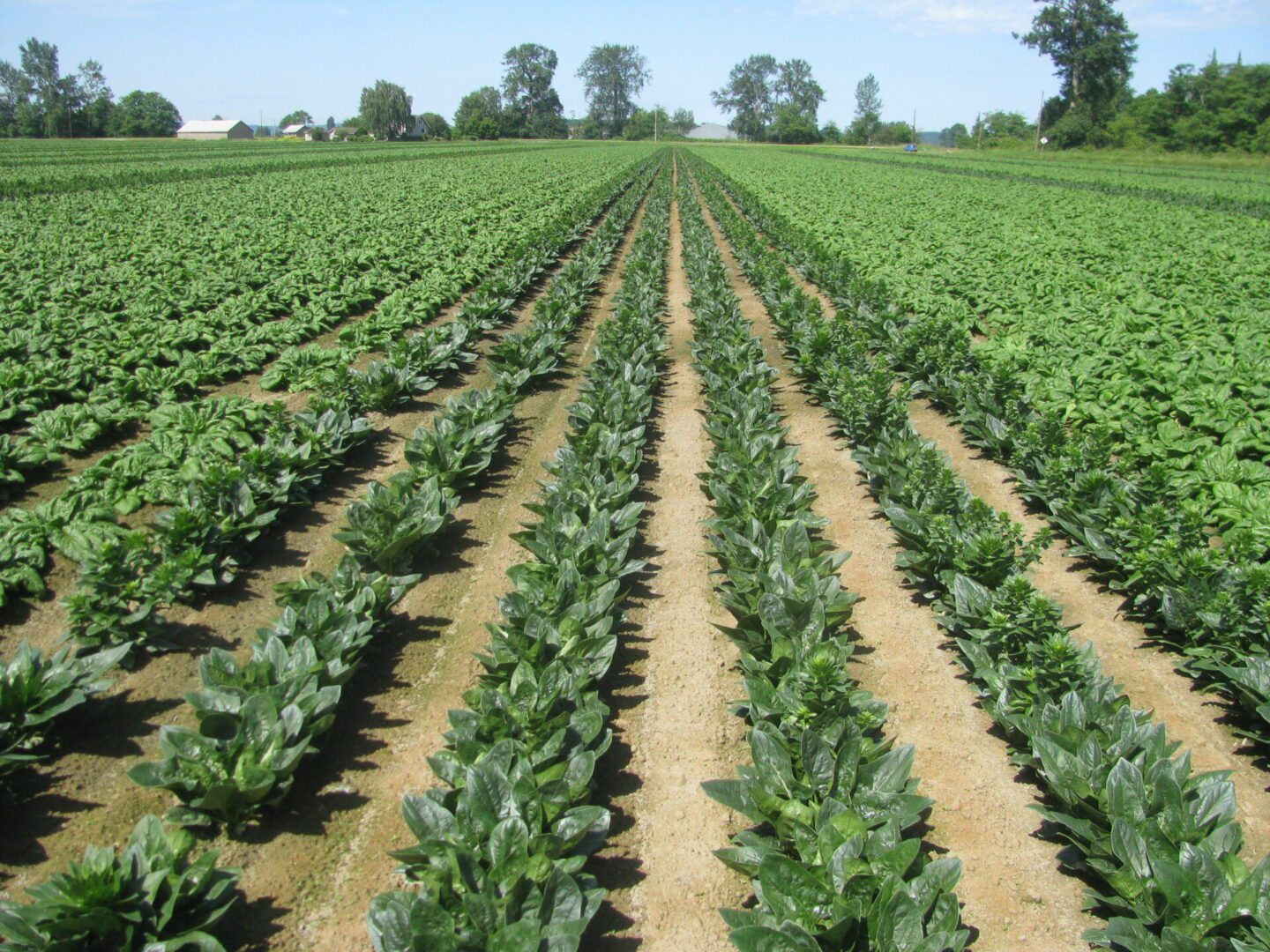

Spinach seed crops are susceptible to Fusarium wilt caused by the soilborne fungus Fusarium oxysporum f. sp. spinaciae. This fungus can persist in acid soils for 15 or more years, making it tough to eradicate, and creating logistical headaches for producers. Fusarium wilt infects spinach plants through the roots, restricting water and nutrient uptake, and ultimately leading to plant death.
To avoid Fusarium wilt, spinach seed producers must plant their crops into fields that have not had spinach grown for the previous 10 - 15 years. That’s how long it can take for the soilborne pathogen to die back enough to avoid severe losses to Fusarium wilt. In some cases, even rotations of 15-18 years have not been long enough to avoid major losses to Fusarium wilt in spinach seed crops.
This creates a massive challenge to the spinach seed industry in the USA, particularly with compounding issues of reduced farmland due to urban expansion, heightened demand for the “superfood”, and the need to keep spinach seed crops separated at least a ¼ mile apart because spinach plants are wind-pollinated. It is increasingly difficult for producers to find suitable land to grow spinach seed.
A chemical soil solution for a biological pathogen?
By working with spinach seed producers, Lindsey demonstrated that applying agricultural limestone (97% calcium carbonate) can suppress Fusarium wilt of spinach on the acid soils typical for western Washington. Applying agricultural limestone increases the soil pH, making it more basic. Because the Fusarium wilt fungus thrives best in acidic conditions, altering soil pH is key to suppressing the pathogen. Liming is particularly important in western Washington and Oregon, where soils are typically acidic due to high rainfall and the geological material from which these soils were formed.
The long-term use of some fertilizers, particularly ammonium sources of nitrogen, also acidify soil. Acidic soils are an ideal habitat for Fusarium wilt. This makes agricultural limestone applications an excellent chemical management tool for this pathogen, and one that can be used for both conventional and organic spinach seed production. Lindsey’s research demonstrated the ability to reduce spinach seed crop rotation intervals by as much as 50% through effective use of agricultural limestone, essentially doubling the carrying capacity for spinach seed production in the USA. Note that dolomitic limestone (calcium carbonate + magnesium carbonate) is not nearly as effective as agricultural limestone (calcium carbonate) for suppressing Fusarium wilt.
A risk assessment tool: bioassay
Lindsey used the local seed grower’s bucket of soil to initiate research that led to the development of a soil bioassay for Fusarium wilt of spinach. A bioassay is a test to measure the concentration or potency of a substance, in this case, the amount of disease pressure from the soilborne fungus that causes spinach Fusarium wilt. With the soil bioassay developed by Lindsey and a PhD student, Emily Gatch, spinach seed producers can effectively assess the risk of Fusarium wilt infection in their fields.
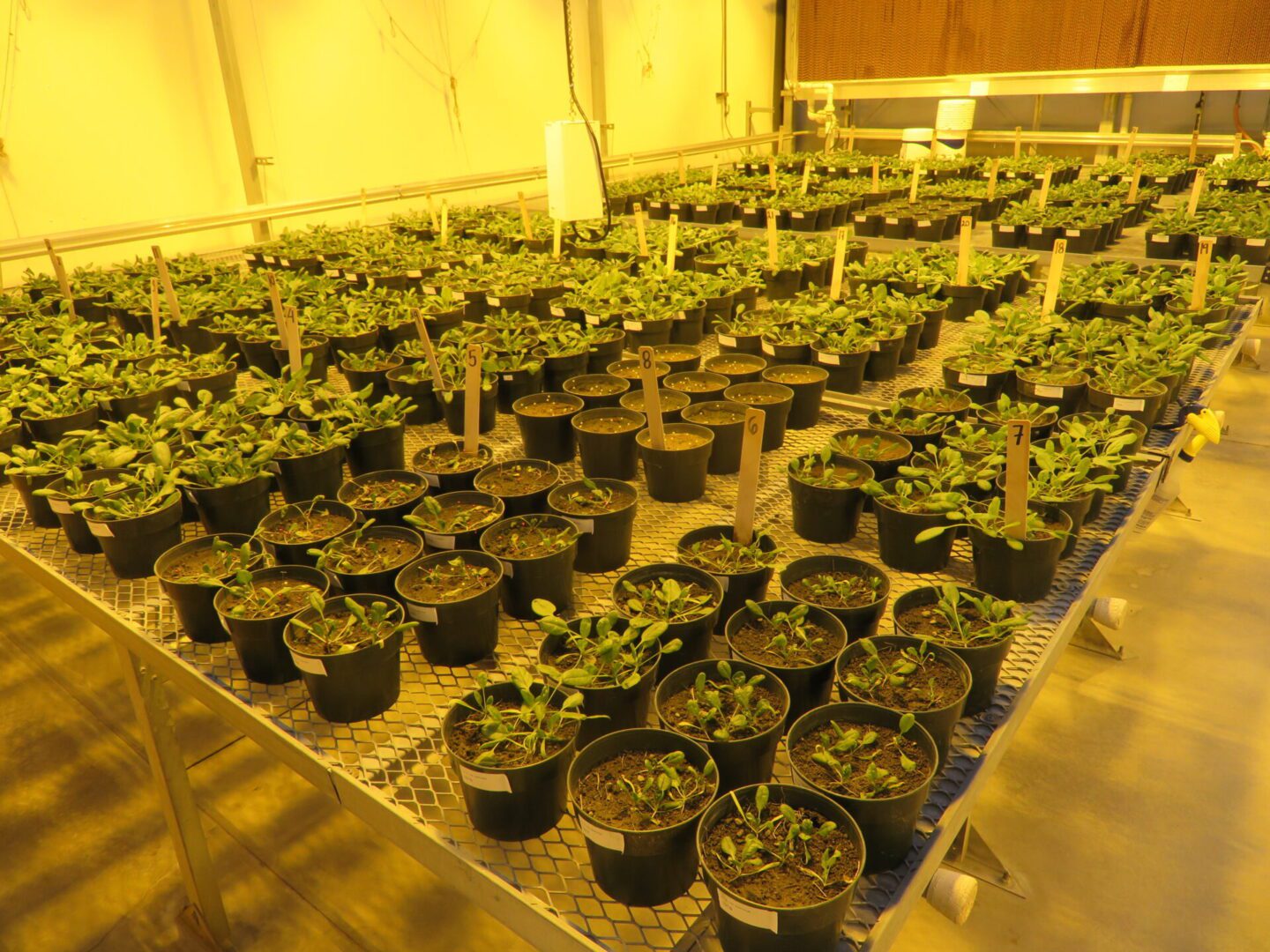

Every winter since 2010, Lindsey and her team accept soil samples from spinach seed producers, and methodically plant three spinach seed cultivars that differ in susceptibility to Fusarium wilt in each of the samples. As of January 2024, they have tested 649 fields in western Washington.
The spinach plants thrive or develop different degrees of Fusarium wilt in each soil sample that gets tested based on two factors:
- The Fusarium wilt pressure in each soil, which is influenced by the amount of inoculum of Fusarium oxysporum f. sp. spinaciae as well as the chemistry, fertility, and other microflora in each soil (including beneficial Fusarium spp. that compete with the spinach pathogen); and
- The genetic resistance to Fusarium wilt of the spinach cultivars planted.
Most spinach cultivars are highly susceptible to Fusarium wilt although there are a few cultivars with partial resistance. However, spinach seed growers do not get to choose what cultivars they plant as the seed crops are grown on contract with seed companies that provide seed of the proprietary cultivars.
As each soil bioassay is completed, Lindsey shares results with each producer that submitted soil samples, so they can use the amount of risk of Fusarium wilt in each sample as a primary indicator of potential success for spinach seed production. Growers see the results in person for their soil samples during an Open House at the end of the bioassay, just in time to choose the fields in which they will plant their spinach seed crops that year. Ideally, they are able to choose fields that had low risk of Fusarium wilt in the bioassay, to reduce their risk of losses. The growers also receive a full nutrient analysis for each sample submitted.
Informed decision-making using biological soils data
Many soil health indicators measure the quantity, identity, or activity of biological life in the soil. While the results are interesting, they can be hard to translate into actionable, on-farm decisions. Information like microbial respiration, fungal to bacterial ratios, or phospholipid fatty acid (PFLA) profiles are fun to explore and help us better understand agro-ecosystems. However, there is limited information on how these indicators relate to agricultural outcomes like yield or disease suppression.
Over the years, Lindsey has been asked by growers to help interpret Fusarium test results provided by commercial labs. Unfortunately, a lot of Fusarium test results are meaningless as the tests do not differentiate strains of Fusarium that are pathogens of the crop the grower wants to plant from the many strains of Fusarium that are not pathogens of that crop and that might even be beneficial (Gatch & du Toit, 2015). There are many different species of Fusarium. The fungus occurs in almost all soils.
Detecting Fusarium in a soil sample does not mean you have a pathogen as most Fusarium in a soil sample usually is not pathogenic to plants or only pathogenic to one or a few plant species. For a soil test result to quantify the risk of Fusarium wilt for a particular crop, the test must be able to differentiate strains that are pathogenic to that crop from all other strains. Simply knowing the genus (Fusarium), or even the species (Fusarium oxysporum) is meaningless.
Soil analysis entails labor-intensive sampling for farmers, and can cost hundreds or thousands of dollars, depending on the size of the field. Before spending time and labor on soil tests, make sure you’re getting accurate, actionable, and scientifically rigorous results.



How to be a soil test/inoculant skeptic
- Be wary of tests or products promising dramatic results or game-changing insights. While innovation occurs continually, progress tends to happen in small, incremental steps.
- Don’t buy soil inoculants that haven’t been tested extensively in your region, crop, and soil pH. Ask the sales reps for results that prove efficacy. If they don’t have the data to share, you don’t want to use the product. Ask for results produced by an independent entity that is not selling the product, e.g., a researcher or extension specialist.
- Ask the lab to explain the method they use for a soil test. If they don’t want to share the method, that may not be a good sign.
- For any Fusarium soil test, ask the lab if the test can differentiate the specific strains of Fusarium that are a pathogen of the crop you want to plant from the many other Fusarium strains that might be in the soil sample.
- Check with your local Extension specialist. You can find one near you here. They can point you toward accredited soil test labs and may be able to provide insight on old and new tests.
Reducing risk for stakeholders
Lindsey’s spinach Fusarium wilt soil bioassay translates scientific findings into biologically meaningful, practical tools for producers. By providing soils data that growers can act upon — like whether to plant or avoid certain fields — her program protects both the producer's bottom line and facilitates planning for future plantings and sustainability of spinach seed production in the USA.
Lindsey was featured in the WaSHI Making Soils Data Actionable Webinar Series, where she described the spinach soil bioassay program. Check out the recording below. You can also find her publications and other resources in the video description on YouTube.
References:
Gatch, E. W., & du Toit, L. J. (2015). A soil bioassay for predicting the risk of spinach Fusarium wilt. Plant Disease 99(4):512–526. https://doi.org/10.1094/PDIS-08-14-0804-RE
Gatch, E. W., & du Toit, L. J. (2017). Limestone-mediated suppression of Fusarium wilt in spinach seed crops. Plant Disease 101:81-94. https://doi.org/10.1094/PDIS-04-16-0423-RE
Gyawali, S., Derie, M. L., Gatch, E. W., Sharma-Poudyal, D., and du Toit, L. J. 2021. Lessons from 10 years of stakeholder adoption of a soil bioassay for spinach Fusarium wilt. Plant Pathology 70:778-792. https://doi.org/10.1111/ppa.13335
Batson, A. M., Gyawali, S., and du Toit, L. J. 2022. Shedding light on races of the spinach Fusarium wilt pathogen, Fusarium oxysporum f. sp. spinaciae. Phytopathology 112:2138-2150. https://doi.org/10.1094/PHYTO-03-22-0107-R
Batson, A. M, Woodhall, J., and du Toit, L. J. 2023. Real-time PCR assays for races of the spinach Fusarium wilt pathogen, Fusarium oxysporum f. sp. spinaciae. Plant Disease 107:2633-2642.
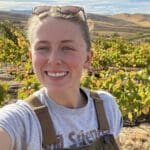

Molly McIlquham
Molly an Extension Coordinator at Washington State University where she works to share soil health information from the Washington Soil Health Initiative.
This article was published by the Washington Soil Health Initiative. For more information, visit wasoilhealth.org. To have these posts delivered straight to your inbox, subscribe to the WaSHI newsletter. To find a soil science technical service provider, visit the Washington State University Extension website or the Washington State Conservation District website.
